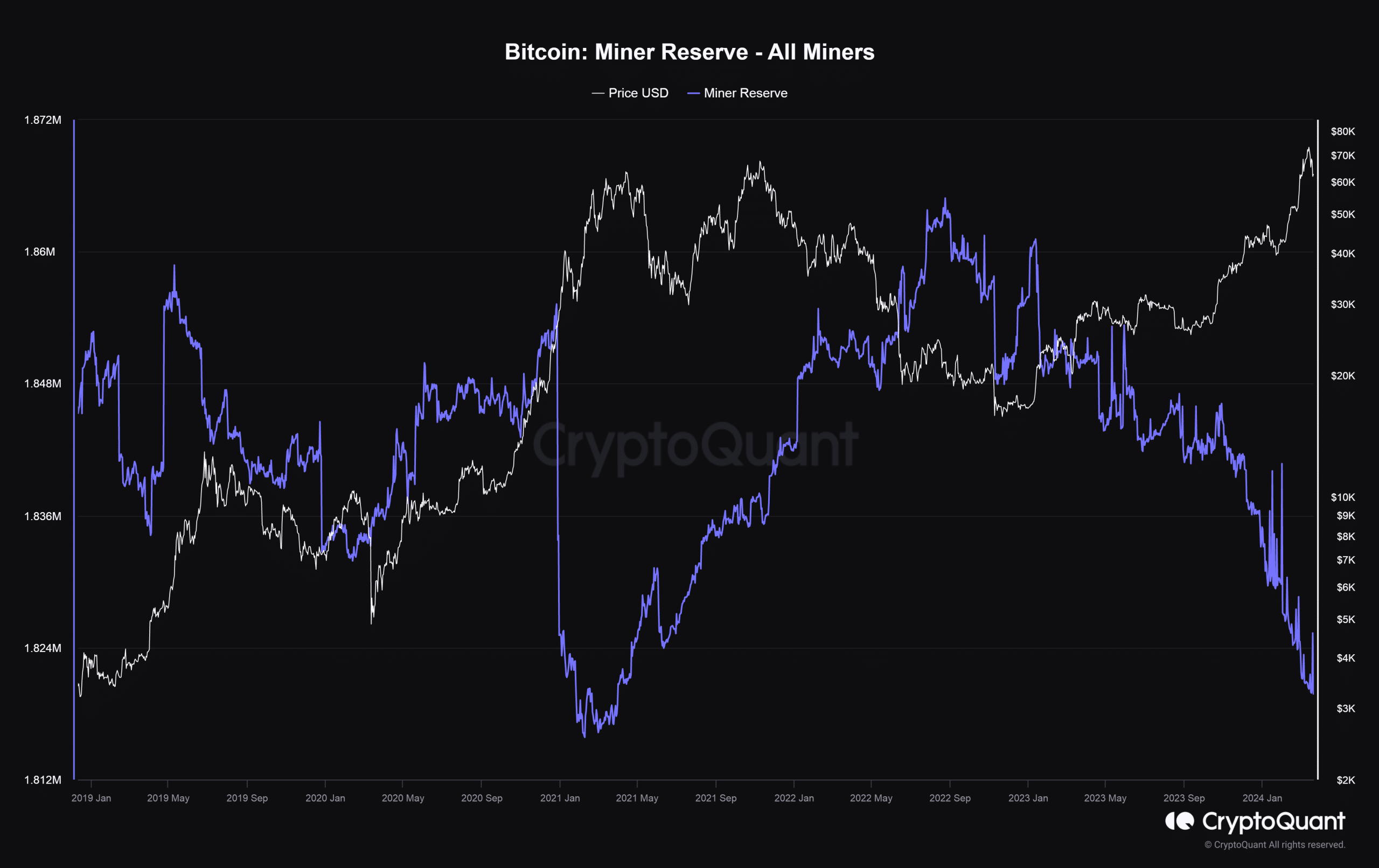- The decline in miners’ reserves is accompanied by Bitcoin’s price increases.
- Miners’ daily earnings reached the second-highest level in history earlier this month.
The market carnage continued as Bitcoin [BTC] fell to a two-week low of $60.9k in the last 24 trading hours. Although the King Coin recovered to $62,000 at the time of writing, it was still under heavy selling pressure, having lost almost 15% of its value over the course of the week, according to CoinMarketCap.
Among other factors, increased liquidations of mining companies could have contributed significantly to the slump.
Miners keep selling
According to AMBCrypto’s examination of CryptoQuant data, the amount of Bitcoins in miner wallets has fallen to a low last seen almost three years ago.


Source: CryptopQuant
As we know, miners often liquidate their assets to cover the costs incurred in setting up mining infrastructure. However, such events ultimately put significant downward pressure on Bitcoin’s price. This is because miners are one of the largest owners of the asset.
Apparently the decline has become stronger since November last year. This was when Bitcoin arguably began its bull cycle, and miners took advantage of the higher returns to increase their income.
Mining revenues are increasing
According to data from Glassnode, miners’ earnings have increased significantly over the past four months. In fact, daily turnover, consisting of transaction fees and fixed block subsidies of 6.25 BTCs, spiked to the second highest level in history on March 7.


Source: Glassnode
However, with the upcoming halve Looking to reduce rewards to 3,125 coins per block, miners expected a significant hit to their revenue streams.
It was likely that miners were raising money to buy more cost-effective mining equipment, which would help them offset the loss of revenue after the halving.
Read BTC price forecast for 2024-2025
Miners don’t collect enough fees
Of greater concern to them was plummeting fee income. As of March 19, transaction fees were just 4.45% of total miner revenue on that day, a sharp and progressive decline from the over 36% recorded during the Inscriptions frenzy last December.


Source: Glassnode

